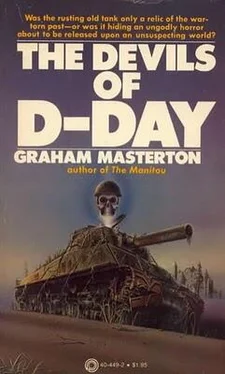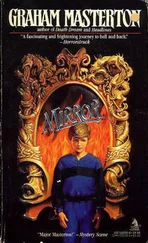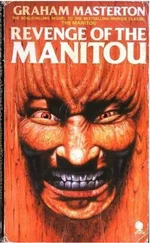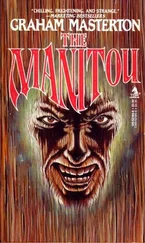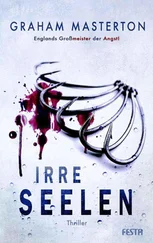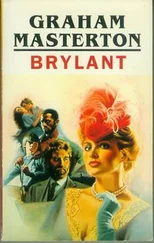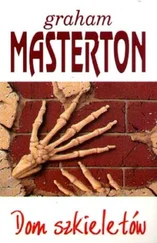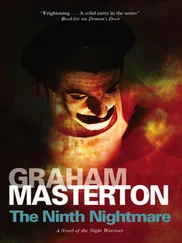I was determined not to let her get away without making some kind of firm commitment. The tank and its ghosts were pretty interesting, but Madeleine Passerelle herself was even more so. You don’t usually get much action when you’re drawing up a military map of northern France, and a few glasses of wine and a tumble in the cowshed with the farmer’s daughter, even in the deep midwinter, was a lot more appealing than silent and solitary meals in the brown garlic-smelling mausoleum that my hotel jocularly called its dining room.
Madeleine smiled. “Very well. Come and eat with us. But make it at eleven-thirty. We lunch early in France.”
“You’ve made my week. Thanks a lot.”
I reached forward to kiss her, but my foot slid on the churned-up mud of the farmyard, and I almost lost my balance. I saved most of my dignity by turning my slide into three rapid steps, but the kiss was lost to the freezing air, a puff of vapour that vanished in the dusk. Amused, Madeleine said, “ Au revoir, Monsieur McCook. Until tomorrow.”
I watched her walk across the yard and disappear through the stable door. A cold wet drizzle was beginning to sift down from the evening sky, and it would probably turn into snow in an hour or two. I left the farm and began to trudge back down the road towards the Pont D’Ouilly, where I’d left my car.
Along the road, it was silent and soaking and dark. I kept my hands shoved deep in my overcoat pockets and my scarf pulled up over my mouth. Way over to my right, I could hear the Orne rushing over the brownish granite rocks of its shallow bed, and on my left, just beyond the hedge, reared the slabby blocks of the cliffs that gave this part of Normandy its name—Swiss Normandy. The rocks were jacketed in slime and moss, and laced up with hanging tree-roots, and you could just imagine strange and malignant creatures lurking in their crevices and cracks.
I hadn’t realized how far I’d walked along the road with Madeleine. It took me almost five minutes before I saw my yellow car by the verge, and the huddled black bulk of the abandoned tank. The drizzle was turning into large wet flakes of half-melted snow now, and I pulled my coat collar up and walked more quickly.
Who knows what odd tricks your eyes can play in the snow and the dark? When your eyes are tired, you can see dark shadows like cats slipping away at the corner of your field of vision. Shadows can seem to stand on their own, and trees can seem to move. But that evening, on the road to Pont D’Ouilly, I was sure that my eyes weren’t playing up, and that I did see something. There’s a French road sign which warns that the night can deceive you, and possibly it did, but I still think that what I glimpsed wasn’t an optical illusion. It was enough to make me stop in the road, and feel a tight chill that was even colder than the evening air.
Through the tumbling snow, a few yards away from the derelict tank, I saw a small bony figure, white in the darkness, not much taller than a child of five, and it seemed to be hopping or running. The sight of it was so sudden and strange that I was momentarily terrified; but then I ran forward through the snow and shouted, “Hey! You!”
My shout echoed flatly back from the nearby rocks. I peered into the dark but there was nobody there. Only the rusting bulk of the Sherman tank, woven into the brambles of the hedge. Only the wet road, and the noise of the river. There was no sign of any figure; no sign of any child. I walked back across to my car and checked it for damage, in case the figure had been a vandal or a thief, but the Citröen was unmarked. I climbed thoughtfully inside and sat there for a minute or two drying my face and hair with my handkerchief, wondering what the hell was going on around here.
I started the Citröen’s engine, but just before I drove off I took one last look at the tank. It gave me a really peculiar feeling, thinking that it had been decaying by this roadside since 1944, unmoved, and that here at this very place the American Army had fought to liberate Normandy. For the first time in my map-making career, I felt history was alive; I felt history move under my feet. I wondered if the skeletons of the crew were still inside the tank, but I decided that they’d probably been taken out years ago and given a decent burial. The French were beautifully and gravely respectful to the remains of the men who had died trying to liberate them.
I released the Citröen’s brake and drove down the gloomy road, across the bridge, and back up the winding hill to the main highway. The snow was crowding my windshield, and the car’s tacky little windshield wipers were having about as much success in clearing it away as two geriatrics sweeping up the ticker-tape after Lindy’s parade through Wall Street. When I joined the main stream of traffic, I almost collided with a Renault which was bombing through the snow at eighty-five. Vive la vélocité , I thought to myself, as I crawled back towards Falaise at twenty.
Next day, in the high-ceilinged hotel dining room, I ate a solemn breakfast of croissants and coffee and confitures, watching myself in the mottled mirrors and trying to decipher what the hell was happening in the world today from a copy of Le Figaro on a long stick. Across the room, a rotund Frenchman with waxed whiskers and a huge white napkin tucked in his shirt collar was wolfing down breadrolls as though he was trying to put up the price of shares in the bakery industry. A waitress in black with a pinched face rapped around the black-and-white tiled floor in court shoes and made sure you felt you were lonely and unwanted, and that you only wanted breakfast because you were an unpardonable pest. I thought of changing hotels, but then I thought of Madeleine, and things didn’t seem too bad.
I spent most of the morning on the new curve of road that comes into Clécy from the south-east. A dry wind had lifted away most of the snow during the night, but it was still intensely cold, and the village lay frosted in its valley, with the broad hump of the hills far behind it, and tiny villagers came and went from its doors, tending their gardens or their washing, or fetching in logs, and the hours rang from the tall church spire, and New York seemed a very long way away.
Maybe my mind was distracted, but I only managed to finish half the readings that I’d hoped to take, and by eleven o’clock, as the church tolled its hour, I was wrapped up and ready to drive across to Pont D’Ouilly. I’d taken the trouble to stop at a store in the village and buy a very reasonable bottle of Bordeaux, just in case Madeleine’s father needed a little appeasing. I also bought, for Madeleine herself, a box of crystallised fruit. They’re very big on crystallised fruit in Normandy.
The rented Citröen coughed and choked, but finally found its way down the twisting road to the bridge. The countryside didn’t look very much more hospitable by daylight than it had by night. There was a cold silvery haze over the fields, and mist was hanging under the elms like soiled net curtains. The cows were still there, standing patiently in the chill, chewing the colourless grass and breathing out so much steam they looked like roomfuls of heavy smokers. I drove over the stone bridge, with the Orne gargling beneath me, and then I slowed down so that I could take a look at the tank.
There it was—silent and broken—wound in brambles and leafless creeper. I stopped the car for a moment and slid open my window so that I could see the corroded wheels, the collapsed tracks, and the small dark turret with its scaly sides. There was something deeply sinister and sorrowful about it. It reminded me of the abandoned Mulberry harbour that still lies off the shore of Arromanches, on Normandy’s channel coast, a grim memorial to June 6, 1944, that no stone monument or statue could ever adequately replace.
Читать дальше
